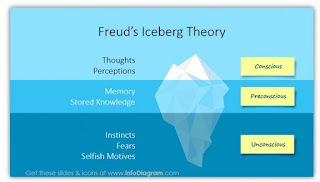Freud's Theory of 'The Self' and Fight Club (1999)
A Freudian Analysis of David Fincher's Fight Club (1999)
In David Fincher's fight club, Freud's theory of "The Self' can be frequently applied to the narrative. The concept relates to Freud's theories on the personality entailing of three separate parts, the Id, the Ego and the Superego. Fight club is the story of an average man, who is so generically average that he does not have a name. In the credits, Fincher refers to him simply as 'The Narrator'. His life is monotonous, and everything is "a copy of a copy" (Fight club, 1999). Until he meets Tyler Durden on a plane when he is travelling for a business trip; Tyler is the direct opposite of the Narrator, but also everything he desires to be at the same time. (Unknown, 2014)
Tyler Durden, played by Brad Pitt displays the sex appeal that the Narrator (played by Edward Norton) wishes that he had, and isn't tied to big corporation like the Narrator is. The huge plot twist at the epilogue is that we discover that Durden and the Narrator are actually the same person. In terms of Freud's theory of self, Tyler is representative of the Id, the part of the Narrator's personality which holds his unconscious wants and desires (Kendra Cherry, 2014). Freud likened the relationship between the Id and the ego as "a man on horseback, who has to hold in check the superior strength of the horse"(Sigmund Freud, 1923, p12) and Fincher clearly demonstrates in tis scene that the Narrator has lost control of, or given into the unrealistic child-like desires of the Id by being involved in the fight club.
The Narrator is representative of a person's ego,
Bibliography
- Cherry,K., (2014) What did Freud Really Think Believe About Personality and The Id, Ego and Superego?, About.com Psychology, available from:About.com Psychology. About.com
- Freud, S., (1923), The Ego and the Id, Vienna, Internationaler Psycho- Analytischer Verlag, W. Norton and Company
- Fincher, D., (1999), Fight Club, 20th Century Fox, Regency Enterprises and Linson Films.
- Unknown Author, (2014), Freudian Analysis of Fight Club, Blogger, available from: http://fightclubandfreud.blogspot.com/2014/05/


Comments
Post a Comment